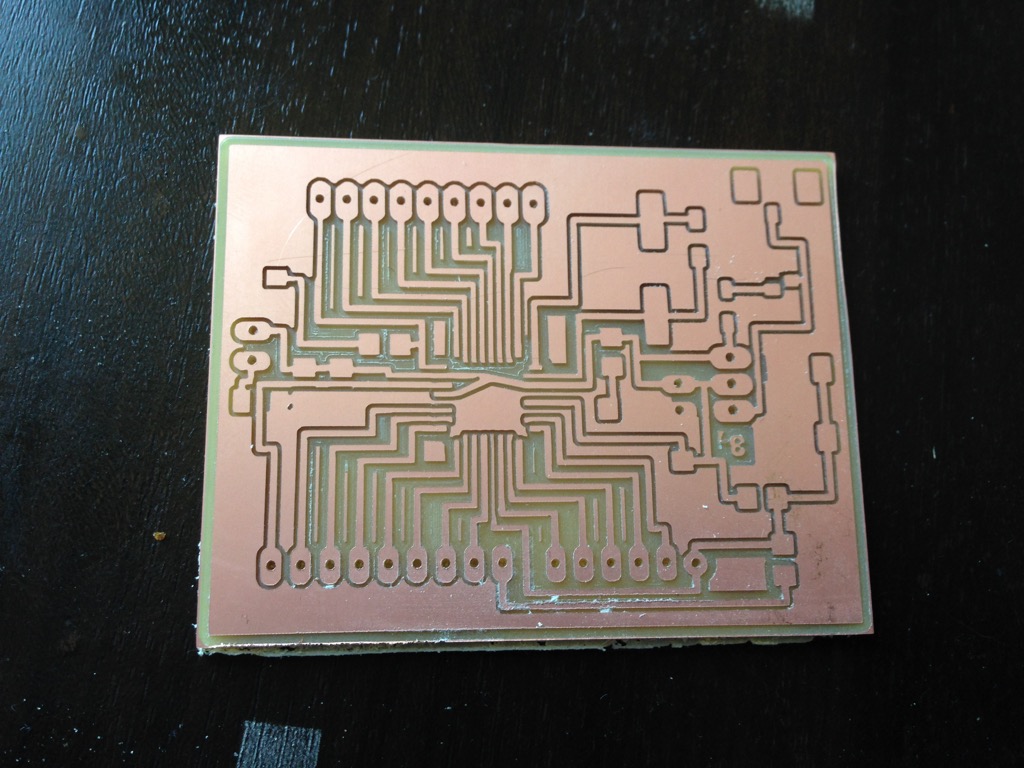Realization
adding components to schematic
- Hear 3 pins
- I add the header with 3 pins (central will be IN power and one jumper that we could place on 1,2 or 2,3 pins will permit us to switch between not-modified voltage and regulated to 3.3V)
- Header 2 pins
- Output voltage, same as current voltage of Satshakit, can be used for external devices
- LDO 3.3V
- Regulator voltage, that connected to one of position of IN switch
- Schottky diode
- Diode that will not permit to go from non regulated voltage to regulated part when regulated part is not active.
- Polygone GND
- Added a polygone around the board to propagate the ground on maximal surface.
Let see what it be


Milling
Standard preparation for Rolland SRM-20 and milling. Images for holes, traces and cutout are below



I pass to milling and here is result.

Ready for soldering and usage.
Now I could develop for my MAX30100 without 3 disconnection of cable each time I want to pass from programming to reading data... It was really borring process.